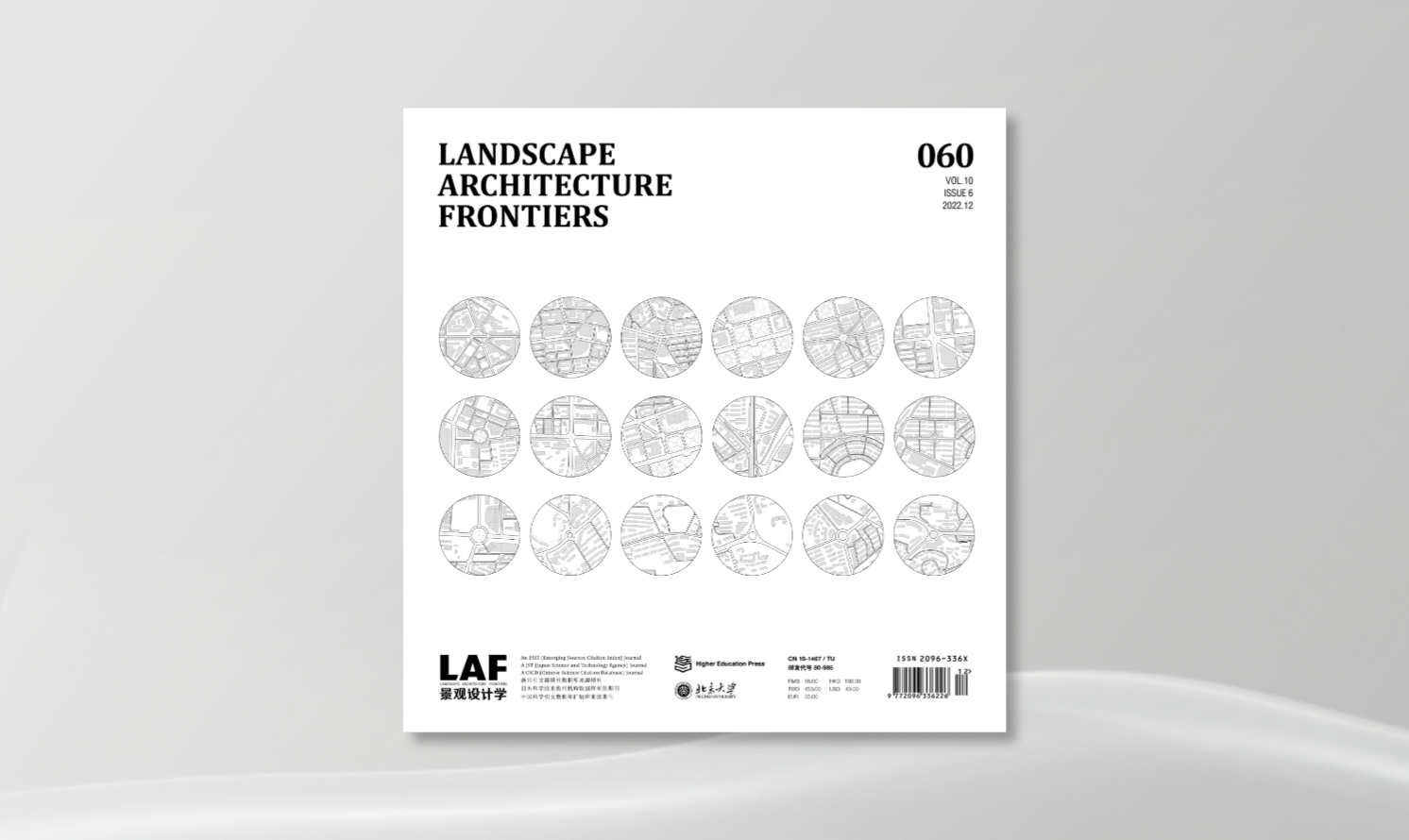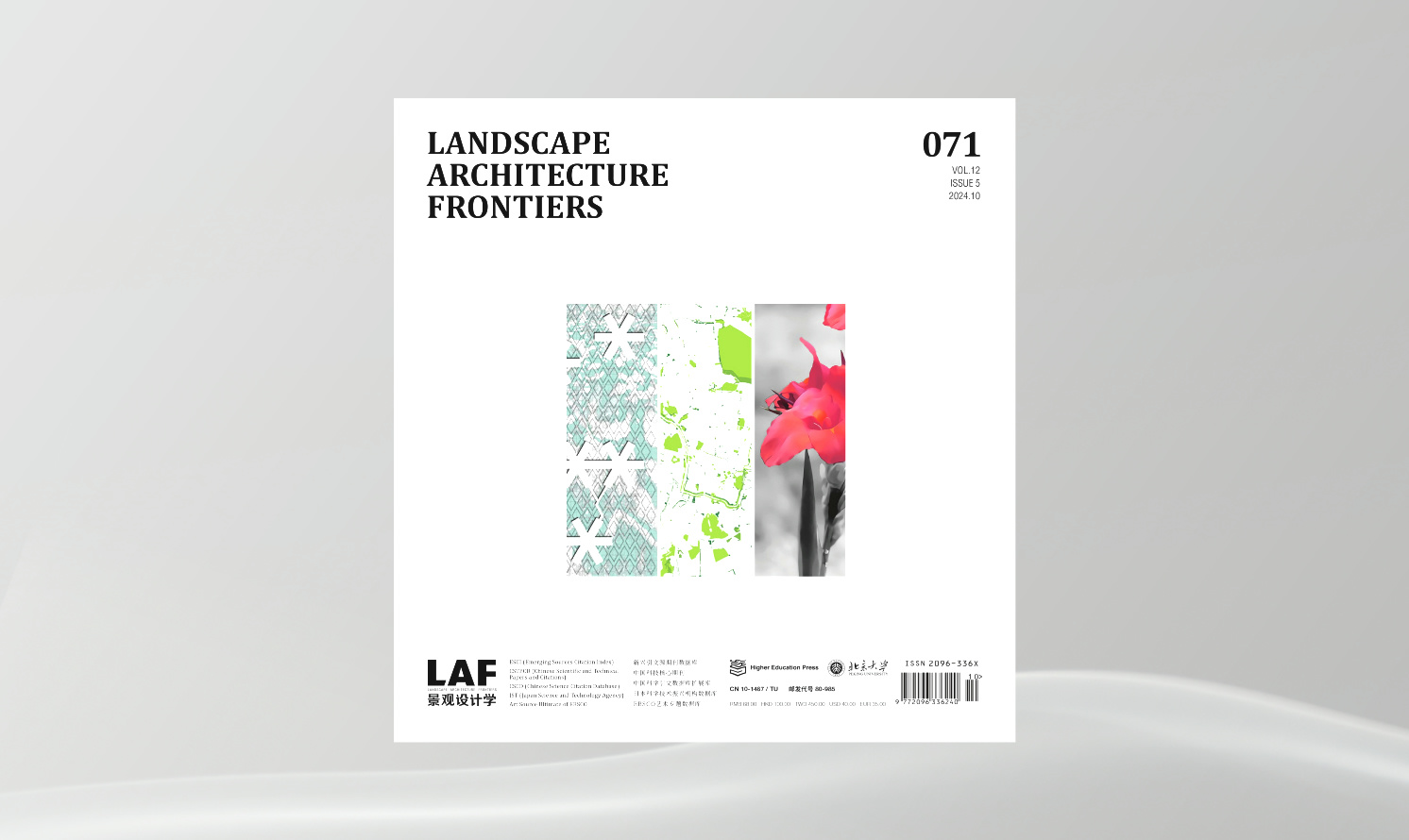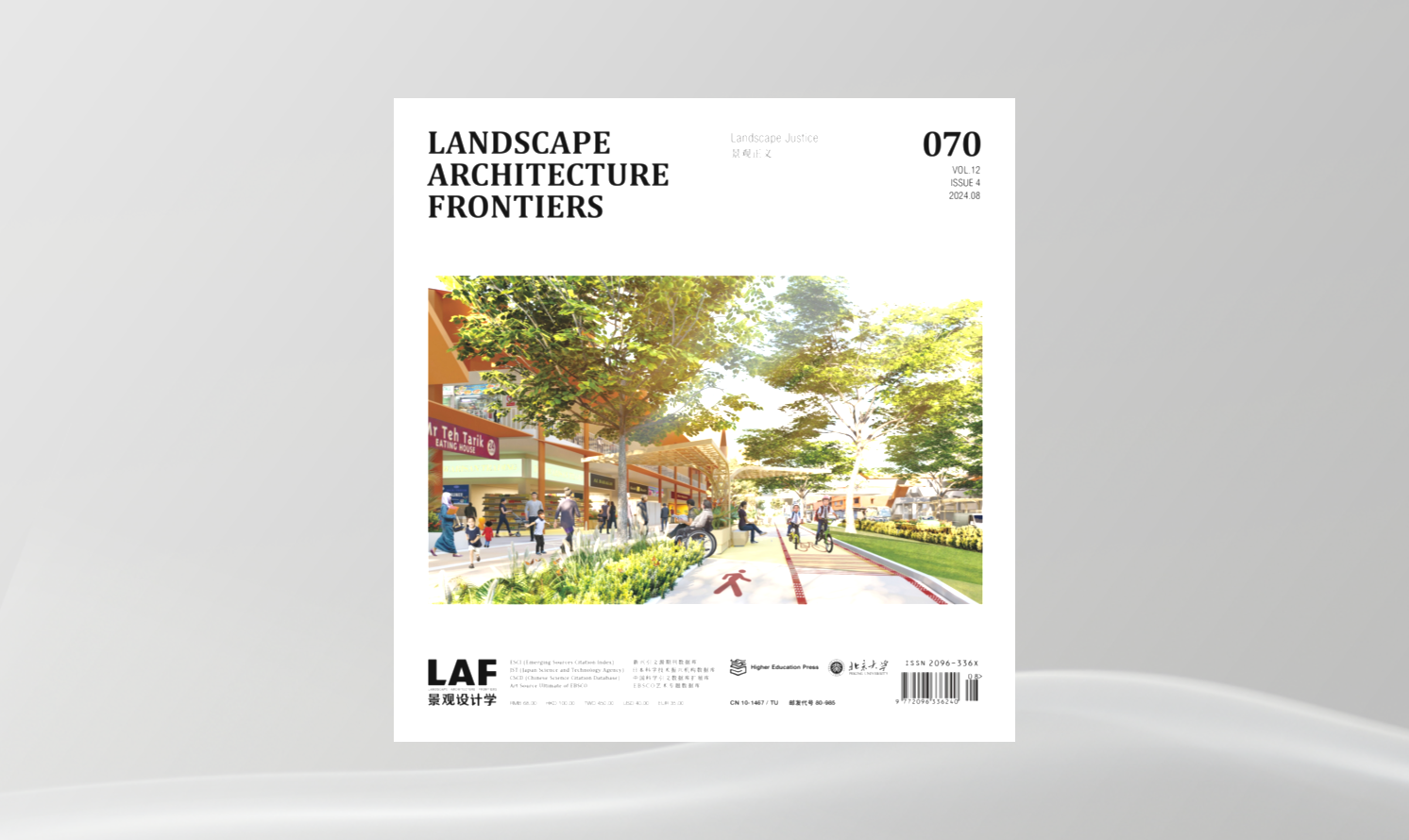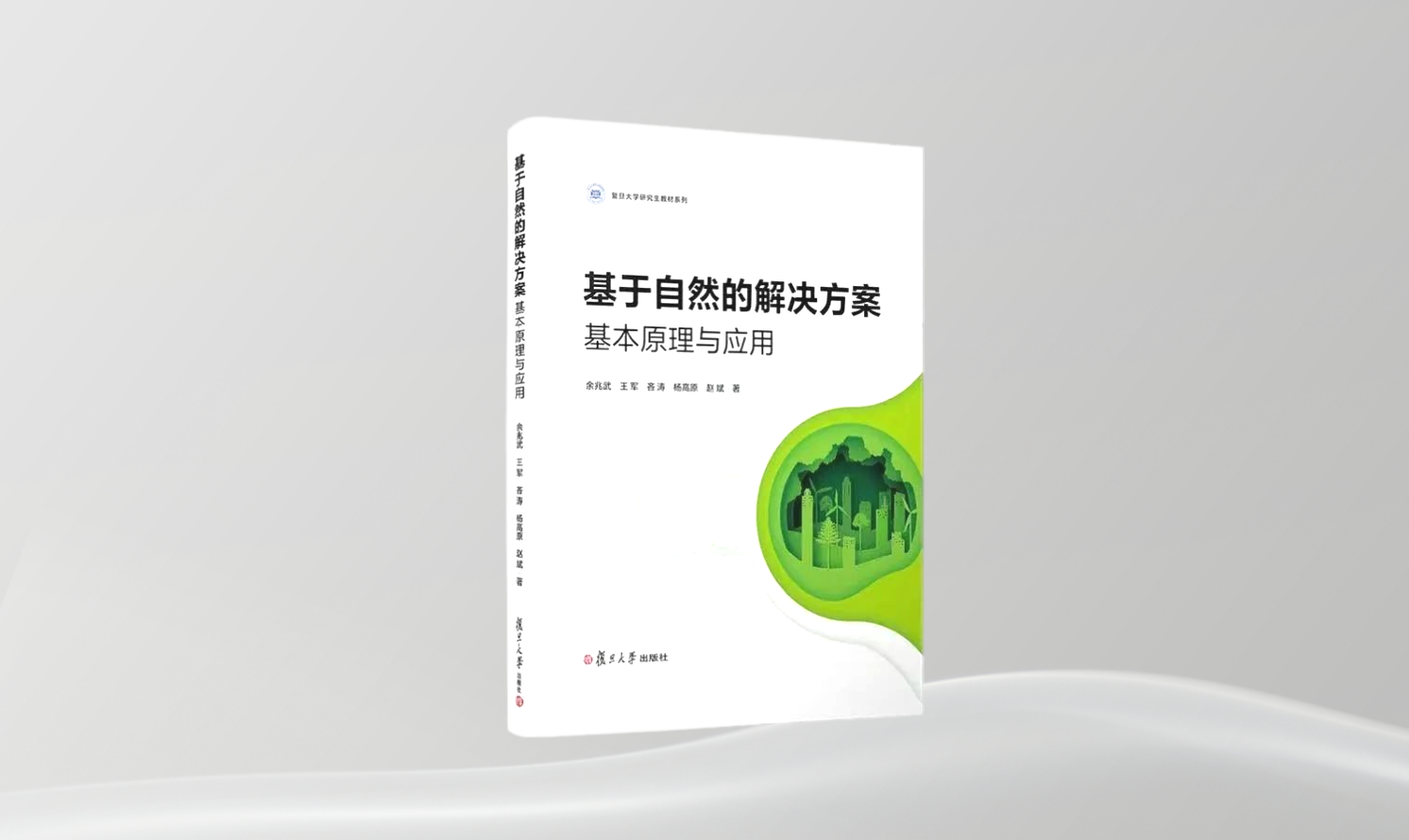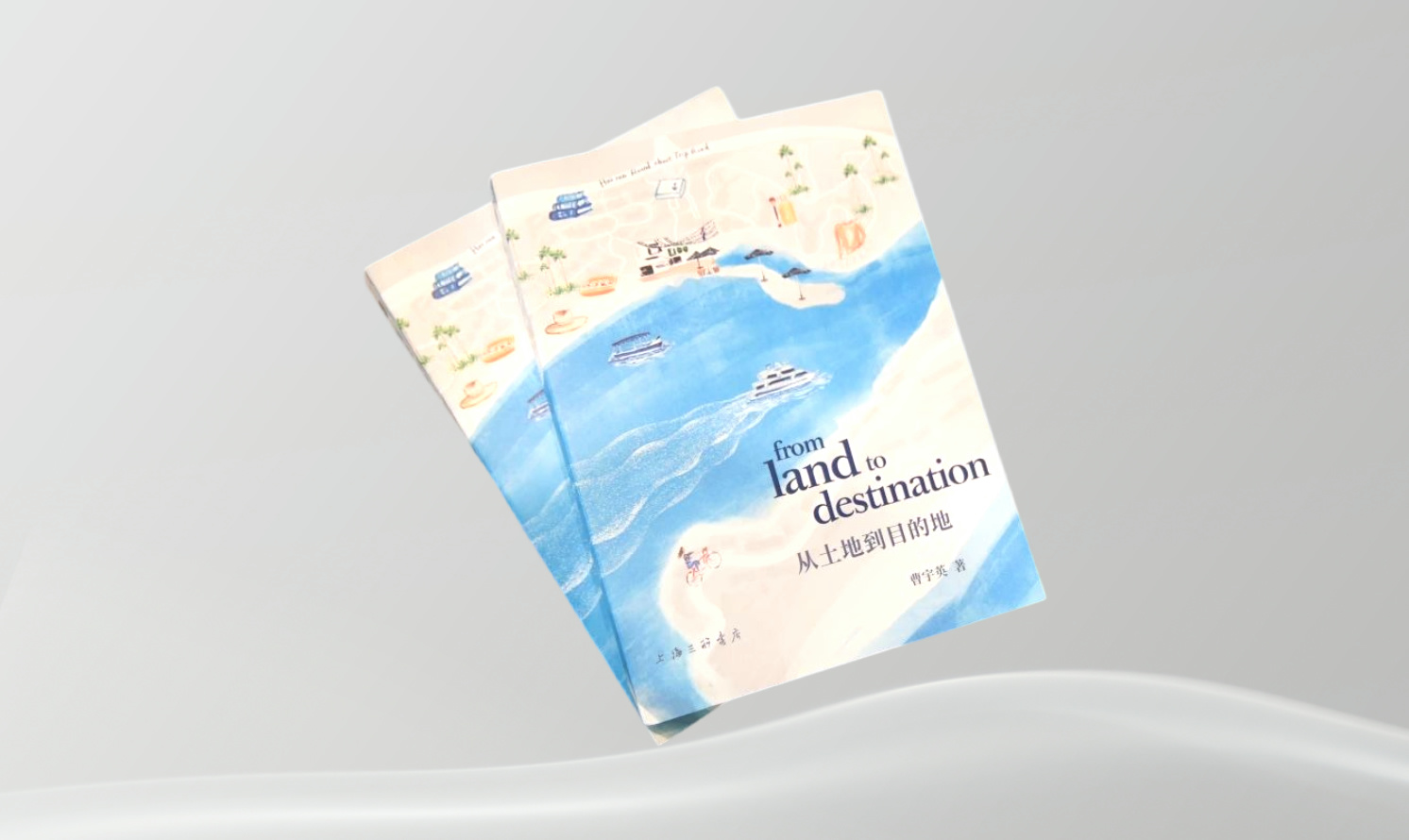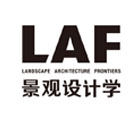基于群落構(gòu)建機(jī)制的城市棕地草本植物生態(tài)種植研究
Herbaceous Planting for Ecological Restoration of Urban Brownfields Based on Mechanisms of the Assembly of Plant Communities
作者:袁嘉�,錢深華,游奉溢���,張照亮�,尹淵 YUAN Jia, QIAN Shenhua, YOU Fengyi, ZHANG Zhaoliang, YIN Yuan
摘要
棕地修復(fù)已成為城市生態(tài)治理的前沿?zé)狳c(diǎn)���,通過生物修復(fù)技術(shù)整治棕地生態(tài)系統(tǒng)����,能夠提供具有巨大生態(tài)潛力的城市景觀與生物棲息地�。當(dāng)前,國(guó)內(nèi)外棕地植被修復(fù)理論及技術(shù)發(fā)展較為遲滯����、植被選種多關(guān)注單一要素�����,以及忽視群落結(jié)構(gòu)與生態(tài)服務(wù)功能構(gòu)建成為城市棕地植被修復(fù)的關(guān)鍵瓶頸��。本文依據(jù)群落構(gòu)建機(jī)制的基礎(chǔ)理論���,創(chuàng)新性提出“微地形設(shè)計(jì)-適應(yīng)性選種-協(xié)同共生結(jié)構(gòu)設(shè)計(jì)-模擬自然群落結(jié)構(gòu)-在地種植”的城市棕地草本植物生態(tài)種植設(shè)計(jì)技術(shù)框架。研究選擇重慶市合川區(qū)一處棕地地塊開展草本植物群落生態(tài)種植實(shí)踐����,并在修復(fù)后對(duì)其生態(tài)效益進(jìn)行評(píng)估�����。結(jié)果表明�,原本生態(tài)功能嚴(yán)重衰退的地塊在修復(fù)后形成了多物種共生、結(jié)構(gòu)穩(wěn)定的草本植物群落�����,場(chǎng)地的徑流管理與生物多樣性保育等生態(tài)服務(wù)功能與景觀美學(xué)價(jià)值得到了有效提升�����。研究成果可為城市棕地生境修復(fù)提供科學(xué)依據(jù)與可參考的技術(shù)范式,對(duì)完善城市生態(tài)網(wǎng)絡(luò)與增強(qiáng)城市生態(tài)系統(tǒng)韌性具有重要意義��。
關(guān)鍵詞
城市棕地����;生態(tài)修復(fù);草本植物群落�;生態(tài)種植;群落構(gòu)建機(jī)制��;生態(tài)系統(tǒng)服務(wù)
ABSTRACT
Brownfield restoration has become a frontier topic in the research on urban ecosystem governance. Optimizing brownfield ecosystems through proper bioremediation approaches can provide urban landscapes and habitats with sound ecological potentials. Currently, the lagging theory and technique development of brownfield vegetation restoration, the species selection based on single causality, and the neglect of community structure and ecological functions formation have become major bottlenecks of brownfield restoration. Introducing the mechanisms of the assembly of plant communities for theoretical support, this paper proposes a novel technical framework of herbaceous planting for the ecological restoration of urban brownfields, which includes micro-topographic design, adaptive species selection, symbiosis structure design, building quasi-nature community structure, and in-situ planting. This research selected a brownfield site located in Hechuan District, Chongqing City for the application of the herbaceous planting, and evaluated the ecological benefits after restoration. Results showed that severely degraded brownfield vegetation has turned into an herbaceous community with a multi-species symbiosis and a stable structure, effectively optimizing its ecological functions such as stormwater retention and biodiversity conservation. This research can provide scientific evidence and a referable technical paradigm for urban brownfield restoration, and also contribute to the enhancement of urban ecological networks and ecosystem resilience.
KEYWORDS
Urban Brownfields; Ecological Restoration; Herbaceous Communities; Ecological Planting; Mechanisms of the Assembly of Plant Communities; Ecosystem Services
“輸入型”城市形態(tài)在中國(guó)東北地區(qū)的本土化演變:以大連市環(huán)形-放射狀空間為例
The Localization of “Imported” Urban Form in Northeast China: The Case Study on Circular–Radial Space in Dalian City
作者:劉健琨, 出口敦 LIU Jiankun, Atsushi DEGUCHI
摘要
歷史上源自外來文化的“輸入型”城市空間形態(tài)在被“移植”至中國(guó)城市后����,由于文化根基缺失,易與現(xiàn)代主流城市建設(shè)脫節(jié)�,其當(dāng)代價(jià)值與城市更新潛力備受質(zhì)疑。本研究以街區(qū)尺度下源于巴洛克城市的“環(huán)形-放射狀空間為例���,以厘清其引入中國(guó)東北地區(qū)城市的背景與動(dòng)因����,并以大連市為例��,明晰其移植后在形式與功能上的適應(yīng)性變化�,繼而提出城市更新建議�����。
研究發(fā)現(xiàn)�,各種幾何形式環(huán)形-放射狀空間的引入��,雖然在不同程度上受到歐�����、美����、日等地區(qū)城市規(guī)劃與理論的影響,但都強(qiáng)調(diào)象征性與功能性并重��。環(huán)形-放射狀空間在大連的城市規(guī)劃建設(shè)具有時(shí)空連續(xù)性���,但受地形、交通�����、規(guī)劃理念等變化影響����,形態(tài)與功能趨向獨(dú)立��,關(guān)聯(lián)性減弱�����,重要程度退居街道網(wǎng)絡(luò)之后��;其延承與變化在城市更新中需辯證考量���。最后,研究重新提出“輸入型”城市空間的“本土化”概念���,并構(gòu)建了普適性研究模式��,為理解相似類型城市形態(tài)的演變提供了嶄新視角����。
關(guān)鍵詞
“輸入型”城市形態(tài)�����;環(huán)形-放射狀空間���;本土化���;跨文化城市景觀�����;中國(guó)城市語境�;大連
ABSTRACT
After the “imported” urban forms, which originated from foreign cultures, were transplanted into Chinese cities, they generate brand-new urbanscape but suffer from a lack of cultural roots and a disconnection with the mainstream of contemporary urban planning. Thus, their current value and potential in urban renewal are questioned. The study takes the circular–radial space from the Baroque cities as an example to clarify the motivation of its import from the west to northeast China. It further clarifies their adaptive changes in form and function in the local urban context, through a case study on Dalian City.
The study finds that different geometric patterns of existing circular–radial space were influenced by European, American, and Japanese urban planning theories to varying degrees, but with equal emphasis on symbolism and functionality. Their implementation in Dalian has a continuity in time and space. But due to the changes in topography, traffic, and planning concepts, their forms and functions tend to be independent, their connection weakens, and their importance recedes after the street network. The circular–radial space in Dalian led to distinctive urbanscape. But during their inheritance and transformation, the rationality of new forms and functions, as well as the necessity of continuing the initial ones need to be dialectically considered, so as to avoid dogmatic revival and antique reproduction.
Finally, the study reconsiders the concept of “l(fā)ocalization” of “imported” urban form, and constructs a general research pattern to provide a new perspective for understanding the transformation of similar types of urban forms.
KEYWORDS
Imported Urban Form; Circular–Radial Space; Localization; Transnational Urbanscape; Chinese Urban Context; Dalian
基于環(huán)境友好行為干預(yù)視角的環(huán)境教育類場(chǎng)所規(guī)劃設(shè)計(jì)思考
Thoughts on the Planning and Design of Environmental Education Sites From the Perspective of Pro-Environmental Behavior Intervention
作者:牛牧菁�����,鐘樂 NIU Mujing, ZHONG Le
摘要
人類的環(huán)境友好行為(pro-environmental behavior���,PEB)可推動(dòng)可持續(xù)發(fā)展��,而PEB干預(yù)策略是PEB實(shí)施效果的重要保障��。當(dāng)前景觀規(guī)劃設(shè)計(jì)關(guān)注點(diǎn)在于環(huán)境教育而非PEB干預(yù)���,對(duì)干預(yù)行為本身少有策劃�,且缺少包含運(yùn)營(yíng)與場(chǎng)地維護(hù)視角的環(huán)境教育類場(chǎng)所的完整規(guī)劃設(shè)計(jì)框架。本文基于對(duì)相關(guān)基礎(chǔ)理論的文獻(xiàn)綜述�,總結(jié)適用于景觀規(guī)劃設(shè)計(jì)的PEB干預(yù)策略����,結(jié)合規(guī)劃設(shè)計(jì)的方法和流程及筆者開展環(huán)境教育的觀察所得�����,提出針對(duì)環(huán)境教育類場(chǎng)所的規(guī)劃設(shè)計(jì)框架:前期調(diào)研-PEB干預(yù)策劃-制定設(shè)計(jì)任務(wù)書-場(chǎng)地設(shè)施規(guī)劃設(shè)計(jì)-維護(hù)管理策劃-使用后評(píng)估-調(diào)整����。該框架可以為景觀規(guī)劃師及設(shè)計(jì)師提供一定指導(dǎo),以優(yōu)化項(xiàng)目的PEB干預(yù)效果�����,同時(shí)也可以幫助場(chǎng)地運(yùn)營(yíng)者和研究者拓寬對(duì)于此類項(xiàng)目的思考維度����。
關(guān)鍵詞
景觀設(shè)計(jì)學(xué);環(huán)境教育類場(chǎng)所���;環(huán)境友好行為干預(yù)策略���;規(guī)劃設(shè)計(jì)框架;保護(hù)心理學(xué)
ABSTRACT
Pro-environmental behavior (PEB) can help facilitate sustainable development, and PEB intervention strategies are developed to guarantee PEB effects. However, in most cases PEB intervention is attached less importance than environmental education. There is no specific programming for PEB intervention, and a full-cycle framework for planning and design that includes site operation and maintenance stages is still absent. Based on literature review and the authors’ experience on environment education activities, this article summarizes the PEB intervention strategies applicable to landscape planning and design, and comes up with a planning and design framework for environmental education sites, which consists of stages of site investigation, PEB intervention planning, development of design briefs, facility planning and design, maintenance and management programming, post-occupancy evaluation, and adjustment. The framework would provide guidance for the landscape planners and designers to improve PEB intervention effects, and offer new insights and tools for site operators and researchers.
KEYWORDS
Landscape Architecture; Environmental Education Sites; Pro-Environmental Behavior Intervention Strategies; Planning and Design Framework; Conservation Psychology
跨域水體生態(tài)修復(fù)全周期一體化項(xiàng)目管理實(shí)踐——長(zhǎng)三角生態(tài)綠色一體化發(fā)展示范區(qū)元蕩示范段案例
Water Ecological Restoration Practice of Cross-Administrative-Area Synergic Projects—Case Study on the Yuandang Lake Synergic Eco-Development Pilot Project, the Demonstration Zone of Green and Integrated Ecological Development of Yangtze River Delta
作者:毛永青,劉王瑞��,王加偉�����,劉安迪�,張杰龍 MAO Yongqing,LIU Wangrui���,WANG Jiawei�,LIU Andi�����,ZHANG Jielong
摘要
區(qū)域城市一體發(fā)展是國(guó)家戰(zhàn)略�����。在尊重現(xiàn)有行政區(qū)劃的前提下實(shí)現(xiàn)一體化模式創(chuàng)新是長(zhǎng)三角生態(tài)綠色一體化發(fā)展示范區(qū)重要示范和實(shí)踐任務(wù)之一�����。本文首先分析了國(guó)內(nèi)外跨域項(xiàng)目一體化實(shí)踐案例��,并總結(jié)了其模式及面臨的關(guān)鍵問題�,繼而以跨越江蘇省和上海市的長(zhǎng)三角生態(tài)綠色一體化發(fā)展示范區(qū)元蕩示范段項(xiàng)目為例,在詳述了一體化實(shí)施過程中各個(gè)階段面臨的具體問題和解決方式的基礎(chǔ)上�����,提出了跨界水體修復(fù)全周期一體化管理的“3P3S”模式框架����。實(shí)踐表明,該框架擺脫傳統(tǒng)依靠行政命令或者權(quán)威機(jī)構(gòu)主導(dǎo)的一體化模式�,是一種自發(fā)性、主動(dòng)性相對(duì)較高的一體化模式的探索���,可為常規(guī)的跨域項(xiàng)目的一體化實(shí)施提供參考�����。
關(guān)鍵詞
長(zhǎng)三角一體化���;長(zhǎng)三角生態(tài)綠色一體化示范區(qū);跨域項(xiàng)目一體化�;跨域生態(tài)治理;一體化模式創(chuàng)新
ABSTRACT
Today integrated regional development becomes a national agenda of China. The Demonstration Zone of Green and Integrated Ecological Development of Yangtze River Delta faces a task of exploring a more effective and localized coordination mechanism for the implementation of cross-administrative-area synergic projects under the current administrative regimes. This article reviews the current practice of cross-administrative-area synergic development at home and abroad, and summarizes corresponding mechanisms and key issues; then by focusing on the case of the Yuandang Lake Synergic Eco-Development Pilot Project that sits on the junction of Shanghai City and Jiangsu Province, this article sorts out the key issues and the solutions at each project stage, and proposes the “3P3S” coordination framework for the implementation of cross-administrative-area synergic projects. As an exploration of spontaneous bottom-up approach—instead of administrative orders—the “3P3S” coordination framework can efficiently promote project implementation under the current administrative regimes, providing reference for synergic implementation of regular cross-administration-area projects.
KEYWORDS
Integrated Development of Yangtze River Delta; The Demonstration Zone of Green and Integrated Ecological Development of Yangtze River Delta; Cross-Administrative-Area Synergic Development; Cross-Administrative-Area Ecological Restoration; Mechanism Innovation for Synergic Development
因地而異:加拿大當(dāng)代景觀設(shè)計(jì)
Terrain-Specific: Contemporary Landscape Architecture in Canada
作者:巴維卡·夏爾馬���,艾麗莎·諾斯 Bhavika SHARMA, Alissa NORTH
摘要
郁郁蔥蔥的植被和廣闊的地形使得如畫的荒野景觀成為了加拿大國(guó)家形象的重要組成部分�。那么,我們?cè)撊绾卫斫饽切┙?jīng)過設(shè)計(jì)的當(dāng)代城市景觀���?多倫多大學(xué)艾麗莎·諾斯教授主編的《天然地形:加拿大景觀設(shè)計(jì)》一書關(guān)注氣候變化下的景觀演變���,結(jié)合當(dāng)代設(shè)計(jì)理論,重點(diǎn)介紹了在加拿大獨(dú)特的地形之上塑造的景觀設(shè)計(jì)項(xiàng)目��。在東海岸��,位于圣約翰的“過境”(In Transit)裝置和斯賓塞島的景觀設(shè)計(jì)項(xiàng)目通過將自然地理特征�、歷史知識(shí)、本土材料和手工藝緊密結(jié)合�,強(qiáng)調(diào)了場(chǎng)所文化特征;在凱克爾滕領(lǐng)地公園遺址所在地��,設(shè)計(jì)師與當(dāng)?shù)匾蚣~特社區(qū)的合作促進(jìn)了包括文化相關(guān)研究方法在內(nèi)的設(shè)計(jì)策略的制定��。該書為加拿大景觀設(shè)計(jì)帶來了更多靈感���,同時(shí)填補(bǔ)了相關(guān)文字記錄的空白�����,展現(xiàn)了加拿大當(dāng)代景觀設(shè)計(jì)有別于全球其他地區(qū)的景觀實(shí)踐(尤其是文字記載豐富的美國(guó)景觀)的獨(dú)特魅力����。
20世紀(jì)早期����,定居在加拿大的藝術(shù)家們通過大尺度的繪畫直觀地展現(xiàn)那里的荒野景觀。然而���,這些圖畫雖然凸顯了地域的廣闊�,卻忽略了其背后隱藏的地域文化特性����。20世紀(jì)下半葉,加拿大景觀設(shè)計(jì)摒棄了之前盛行的“國(guó)際主義風(fēng)格”——將普適性設(shè)計(jì)應(yīng)用于不同的地區(qū)和場(chǎng)地�����,轉(zhuǎn)而遵循“批判性地域主義”設(shè)計(jì)理念�。景觀設(shè)計(jì)師與當(dāng)?shù)鼐用窈献鳎屑?xì)評(píng)估地理環(huán)境���、文化背景等因素����,因地制宜地制定土地管理策略和景觀干預(yù)措施。在“生態(tài)都市主義”的影響下�,景觀設(shè)計(jì)作品反映并參考了加拿大天然地形中的典型生態(tài)系統(tǒng),不斷演變并最終形成了自身獨(dú)有的景觀氣質(zhì)�����。
全球氣候變暖使得加拿大(尤其是北部地區(qū))的景觀處于持續(xù)變化之中�。當(dāng)下,景觀設(shè)計(jì)師更應(yīng)該化挑戰(zhàn)為機(jī)遇�����,建立起與相關(guān)專業(yè)人員�、傳統(tǒng)知識(shí)傳承人的合作關(guān)系,共同探索適應(yīng)氣候變化的新的景觀干預(yù)手段���。
關(guān)鍵詞
加拿大當(dāng)代景觀設(shè)計(jì)�;批判性地域主義���;土著傳統(tǒng)知識(shí)����;文化遺產(chǎn);天然地形
ABSTRACT
The Canadian landscape has typically captured a global imaginary of a pristine wild, but how might its urban designed landscapes be distinctly understood? Foregrounded by the landscape transformations accelerated by climate change, the book Innate Terrain: Canadian Landscape Architecture, edited by Professor Alissa North from the University of Toronto, highlights landscape architecture projects situated on the unique Canadian terrain. Providing further provocation on Canadian landscape architecture, Innate Terrain seeks to fill the literary gap on contemporary landscape perspectives, distinguishing Canadian landscape architecture from global practice, and particularly, its well-documented American counterpart.
Landscape architecture in the Canadian context has evolved and established its own distinct identity, one imbued with national and local sensitivities. Informed by diverse environmental and cultural contexts, Canadian-designed landscapes reflect and refer to the prevailing ecosystems of Canada’s innate terrain. Contrary to the preceding International Style, landscape architecture projects in Canada have adopted the ethos of Critical Regionalism in the second half of the 20th century. Contemporary Canadian practitioners are designing landscapes that are deeply informed by their surrounding geographical context while emphasizing cultural specificity. Central to this cultural specificity, addressed by a new generation of landscape architects, is the increasing recognition of Indigenous Traditional Knowledge within the discipline. Canadian landscape architects have collaborated with First Nations, Inuit, and Métis communities, including the keepers of this knowledge, to develop land management strategies and design landscape interventions.
KEYWORDS
Contemporary Canadian Landscape Architecture; Critical Regionalism; Indigenous Traditional Knowledge; Cultural Heritage; Innate Terrain
 京公海網(wǎng)安備 110108000058號(hào)
京公海網(wǎng)安備 110108000058號(hào)
